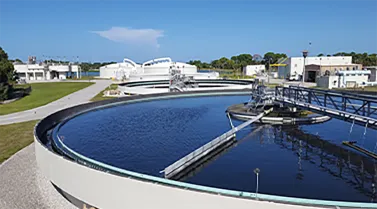Understanding Die Casting Calculations for Enhanced Manufacturing Efficiency and Quality Control
Understanding Die Casting Calculations A Comprehensive Guide
Die casting is a manufacturing process that enables the production of complex shapes with high precision and excellent surface finish. This method is widely used in various industries, including automotive, aerospace, and consumer electronics, owing to its ability to create components that are not only strong but also lightweight. Central to the success of die casting is the ability to make accurate calculations that ensure the efficiency and quality of the production process. In this article, we will delve into the key calculations involved in die casting, helping you understand how to optimize this important manufacturing process.
The Fundamentals of Die Casting
Before we jump into calculations, it's crucial to comprehend what die casting entails. In essence, die casting involves forcing molten metal into a mold under high pressure. The mold, or die, is typically made of steel and is designed to create specific shapes. Once the metal cools and solidifies, the die is opened to remove the finished part. The repeated nature of this process makes it essential to establish precise calculations to maximize production efficiency and minimize waste.
Key Calculations in Die Casting
1. Cavity Volume Calculation One of the first calculations to consider is the volume of the cavity within the die. This determines how much molten metal is needed for each casting. The formula to calculate the cavity volume (Vc) is as follows \[ Vc = L \times W \times H \]
where \(L\) is the length, \(W\) is the width, and \(H\) is the height of the cavity. This calculation is vital to ensure that the correct amount of molten metal fills the mold without overflow or deficiency.
2. Metal Weight Calculation Once the volume is known, we can calculate the weight of the metal required. This is done using the density of the material (ρ). The formula is \[ Weight = Vc \times ρ \]
Accurately calculating the weight helps in determining the cost of raw materials and ensures that the right amount of metal is utilized
.die casting calculations

3. Cycle Time Calculation The efficiency of the die casting process is heavily influenced by cycle time, which refers to the time it takes to complete one casting process. The total cycle time (T) can be broken down into several components \[ T = T_{fill} + T_{cool} + T_{eject} + T_{reset} \]
Here, \(T_{fill}\) is the time taken to fill the mold, \(T_{cool}\) is the cooling time required for the metal to solidify, \(T_{eject}\) is the time taken to eject the part from the die, and \(T_{reset}\) involves resetting the machinery for the next cycle. Minimizing cycle time is crucial for increasing production output.
4. Production Yield Calculation Understanding the production yield is essential for assessing the efficiency of the die casting process. Yield percentage can be calculated using the formula \[ Yield \% = \left( \frac{Number\ of\ Good\ Parts}{Total\ Parts\ Produced} \right) \times 100 \]
A higher yield percentage indicates that fewer defects are occurring during the casting process, leading to lower costs and better overall quality.
5. Cost Analysis Finally, it’s important to calculate the total cost of production, which includes material costs, labor, overhead, and any other expenses associated with the die casting operation. The formula for total cost (TC) is \[ TC = (Material\ Cost + Labor\ Cost + Overhead) \times Number\ of\ Parts \]
Cost analysis is crucial for maintaining profitability and competitive pricing in the market.
Conclusion
Die casting is an intricate process that requires a deep understanding of various calculations to enhance efficiency and output quality. By mastering the calculations of cavity volume, metal weight, cycle time, production yield, and total cost, manufacturers can improve their processes and deliver high-quality products. As industries continue to advance, the role of precise die casting calculations will remain pivotal in achieving economic and operational success.
-
Precision Sheet Metal Stamping Manufacturer | Fast & ReliableNewsAug.01,2025
-
OEM Sand Cast Pump Valve Fittings - Baoding Hairun Machinery And Equipment Trading Co., Ltd.NewsAug.01,2025
-
Custom OEM Impellers | High Efficiency & PrecisionNewsAug.01,2025
-
OEM Sand Cast Pump Valve Fittings - Baoding Hairun Machinery | Customization, Quality AssuranceNewsAug.01,2025
-
OEM Sand Cast Pump Valve Fittings - Baoding Hairun Machinery And Equipment Trading Co., Ltd.NewsAug.01,2025
-
OEM Sand Cast Pump Valve Fittings - Baoding Hairun Machinery And Equipment Trading Co., Ltd.NewsJul.31,2025















